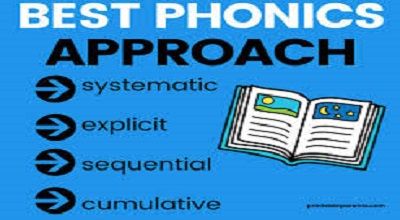Phonics
Now here, What are the 4 Phonics Approaches & How to Approach Phonics? Phonics is a method of teaching reading and spelling by focusing on the relationship between sounds (phonemes) and written letters (graphemes). There are several phonics approaches, and they all aim to help students develop phonemic awareness and literacy skills. Here are four common phonics approaches and how they approach teaching phonics:
Synthetic Phonics:
- Synthetic phonics is a systematic and sequential approach to teaching phonics. It involves teaching children the individual letter sounds (phonemes) and how to blend them together to form words.
- In this approach, students start with learning basic letter-sound correspondences and then progress to blending these sounds to read words. They also learn to segment words into their constituent sounds for spelling.
- The emphasis is on decoding words by sounding them out, and it typically follows a structured and cumulative curriculum.
Analytic Phonics:
- Analytic phonics, also known as implicit phonics, takes a more whole-word approach. Instead of breaking words down into individual phonemes, students are encouraged to recognize whole words and analyze them for common letter patterns.
- This approach often involves reading stories and identifying recurring word families or patterns. Students then generalize these patterns to read other words with similar patterns.
- Analytic phonics can be less systematic than synthetic phonics and may rely more on context and visual cues.
Embedded Phonics:
- Embedded phonics combines phonics instruction with authentic reading and writing activities. It integrates phonics into the context of real texts and language use.
- In this approach, phonics is taught as needed during reading and writing lessons. Teachers seize opportunities to teach phonics skills when students encounter words that can be decoded.
- Embedded phonics allows for a more holistic and contextual understanding of phonics but may not be as explicit as synthetic phonics.
Analogy Phonics:
- Analogy phonics focuses on teaching students to recognize and use analogies between known words and unfamiliar words to decode and spell.
- Students are encouraged to look for similarities and patterns between words they already know and new words. For example, if they can read “cat,” they can use that knowledge to read “bat.”
- This approach relies on word families and common word parts to help students build their phonics skills.
Final Words
The choice of which phonics approach to use often depends on various factors, including the age and readiness of the students, the curriculum in use, and the preferences of teachers and educators. Many schools and educators may use a combination of these approaches to meet the diverse needs of their students. Regardless of the approach chosen, systematic and explicit phonics instruction is essential to help students become proficient readers and spellers.
